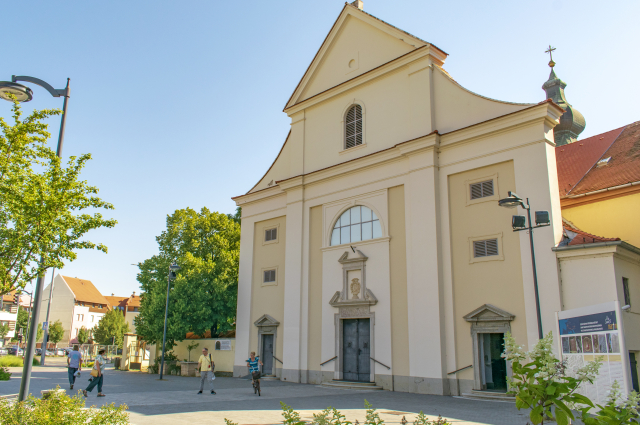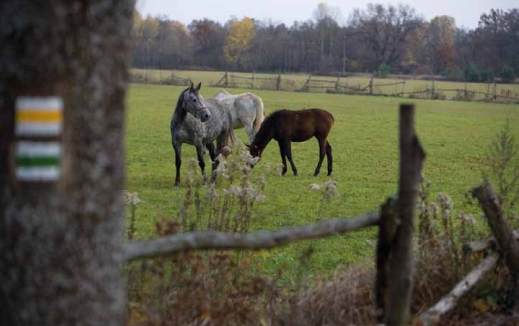
Full southern route - (S) -Szombathely - Kercaszomor

Stops along the route:
Kercaszomor - Magyarföld -Szatta - Zalalövő - Pusztacsatár - Nádasd- Körmend- Ják-Szombathely
The main St. Martin route starts from Szombathely, the place of St. Martin's birth, and continues to the important places of his life, including his death and burial in France. This route crosses the border at Kercaszomor.
S-02 - Ják - Nagykölked - Harasztifalu - Körmend
S-04 - Zalalövő - Csöde - Szatta
S-05 - Szatta - Ramocsa- Kerkáskpáolna - Kercaszomor
S-06 Kercaszomor - Kobilje/Kebeleszentmárton

The Via Sancti Martini Route from Szombathely to Kercaszomor.
- Duration: 25 hour(s)
- Length: 96 km
| Area: | Southern route |
| Level difference: | 838 m |
| Típus: | Walking routes |
Level difference
Szolgáltatás Stop point
Megállópont - Csöde
CsödeCsöde is a stop on the Via Sancti Martini from Szombathely to Tours in France. The pilgrimage route commemorates the great saint...
MoreStop point - Szombathely
SzombathelyThe people of Szombathely are particularly close to the person of Saint Martin. Above the entrance to the chapel of the church...
MoreStop point - Ják
JákThe Abbey of St George of Jaak was founded around 1220 by Martin the Great of Jaak (Marthinus Magnus de Jaak), and the teplom...
MoreStop point - Nagyköldked
Nagyköldked - Szent Miklós templomThe settlement is mentioned as Kewlked in 1221. By the early 1300s it was certainly a churched place, with a church dedicated to...
MoreStop point - Harasztifalu
HarasztifaluHarasztifalu was originally a settlement of Croatian nationality, settled by Péter Erdődy in the mid-1500s. The name of the...
MoreStop point - Szatta
SzattaSzatta is one of the smallest settlements in the Guard. The village was depopulated during the Turkish times. The old village...
MoreStop point - Zalalövő
ZalalövőZalalövő was already an inhabited place and a transport hub in Roman times. The settlement was granted the status of a town by...
MoreStop point - Ramocsa
RamocsaThe village is mentioned as Ramcha in 1378. In the 1600s, the village was destroyed by the Turks and was temporarily...
MoreStop point - Kerkáskápolna
KerkáskápolnaThe settlement was a village of the Kerka guards at the time of the existence of the guard organization (XI - XV century)....
MoreStop point - Kercaszomor
KercaszomorKercaszomor is a predominantly Reformed settlement. Kecaszomor was created in 1942 by the merger of Kerca and Szomoróc.
MoreStop point - Körmend
Körmend
(Written by Gyula Siklós, the archaeologist)
In his will of 1434-35, the merchant István Körmendi mentions three churches in...
Stop point -Pusztacsatár
PusztacsatárThe name Pusztacsatár refers to the Árpád era village of Csatár and the occupation of its inhabitants (csatár = shield maker)....
More




















